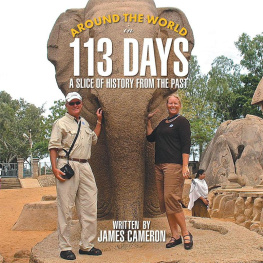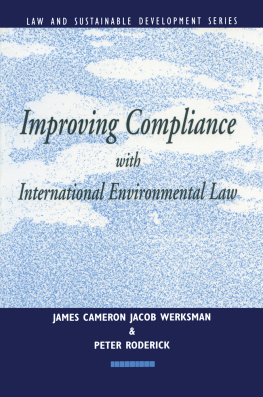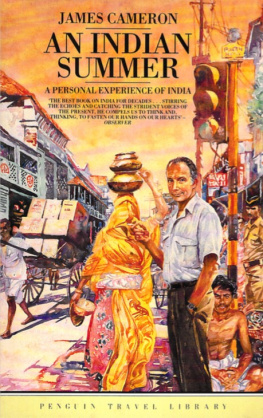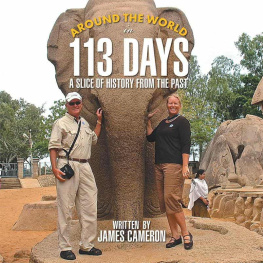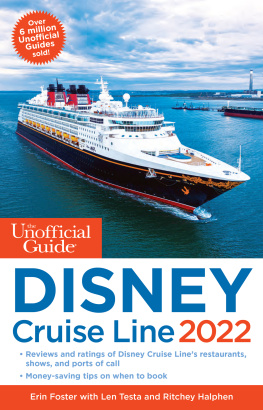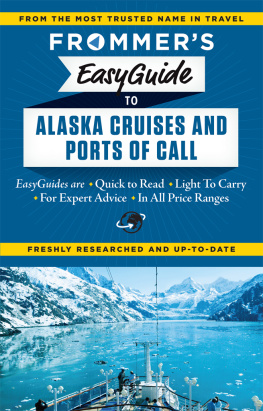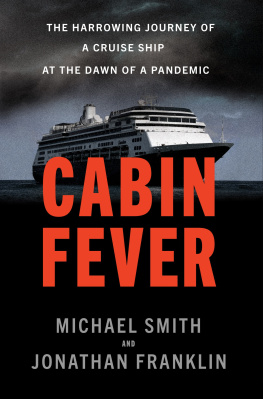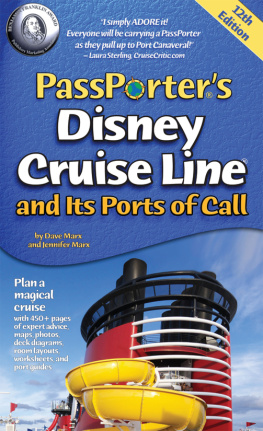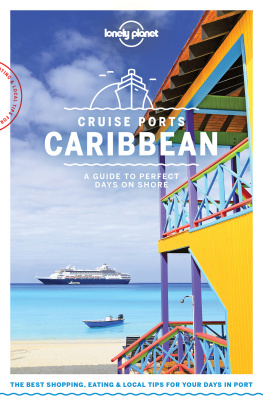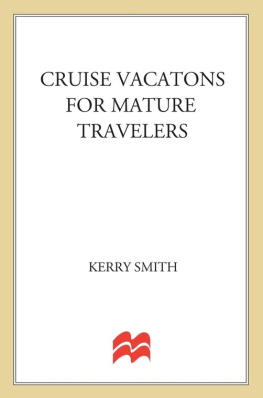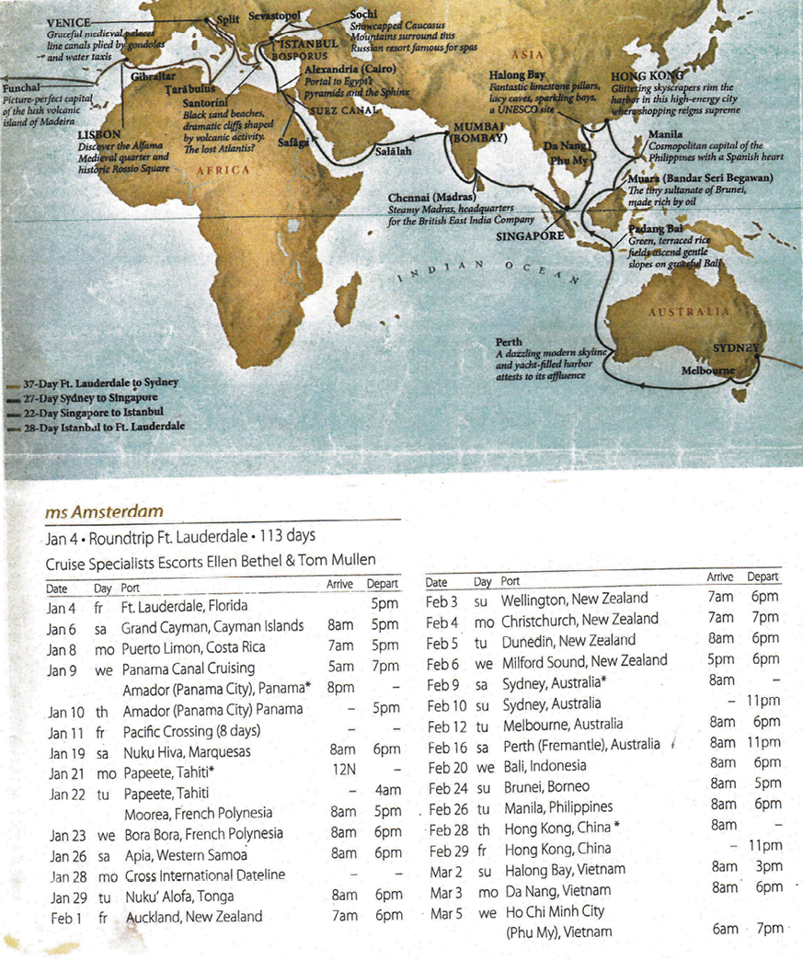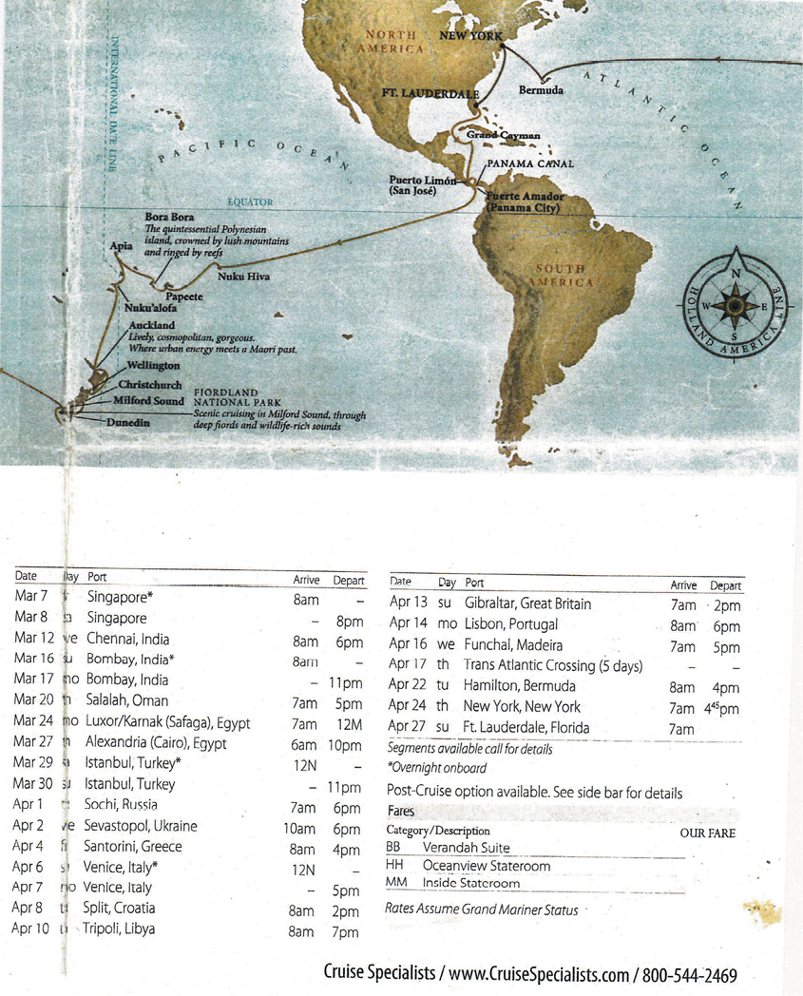January 14, 2008
A number of you asked if I could provide some description of the ports we stopped in even though I cannot accompany the description with photos. I am sending this along in that context.
We left Port Everglades in Ft. Lauderdale at 8:00 p.m. on January 4. For those of you who have never taken a cruise, ships announce their departures from ports by three long blasts on the ships horn. Disney ships are the exceptionthey play a tune such as When You Wish upon a Star on their speaker systems. Connie and I were on the bow of the Promenade deck when the ship sailed and the deep sound of the horn made chills run up and down our spines. Ships leaving Port Everglades pass several high-rise apartment buildings just before heading to open sea. Upon hearing the horn, people in the apartments began flashing their interior lights on and off, sounding air horns, and waving from their balconies. It was a very moving experience.
Our first stop was Grand Cayman where we anchored and were tendered from the Amsterdam to the pier. Our shore excursion led us to a visit of Pedro St. James, a historic residence owned by generations of a family dating back to when England claimed the Cayman Islands as its possessions. We next visited the Queen Elizabeth II Botanical Gardens where we saw many plant varieties and wildlife, including a blue iguana found only on Grand Cayman. The Caymans were devastated by hurricane Ivan in 2004, and the citizens have done a great job in rebuilding their communities. Many of the structures are new and fresh looking.
Next was Puerto Limon in Costa Rica. We docked and then took a several hour van ride to a remote river (Sarapique) in the Costa Rican rain forest. We passed many banana plantationsthe coffee plantations were on the hillsides of the central mountain range that was immediately to the west. We went downriver on a small excursion boat for about an hour, had a wonderful lunch at a riverside hacienda, and then boated back to the van. Along the river we saw howler monkeys, crocodiles, caymans (similar in appearance but smaller than crocodiles), sloths, toucans, iguanas, and many birds we see in Florida such as egrets and herons. Our guide was well educated and an expert on all facets of Costa Rican life and flora and fauna. He warned us in advance that we would be traveling over many kilometers of potholes with a little bit of road bed, and he wasnt exaggerating. We were about ten hours off the boat for this excursion and returned exhausted.
After a day at sea we began our crossing of the Panama Canal at 6:00 a.m. Except for occasional short breaks, Connie and I were out on that same bow deck from 6:00 a.m. until about 3:00 p.m., leaving after we had passed through the last set of locks and under the All American bridge. It was an incredible experience and one everybody should try to do at least once in their lives. The schedule on the canal is southbound ships (Atlantic to Pacific) take passage from midnight to noon and northbound ships from noon to midnight. Large ships pass during daylight with passenger ships taking priority over freighter/tanker/container ships. Small ships pass at night with a number of ships sharing each lock at the same time. All ships are pulled through the locks by locomotives that run on each side of the locks. There are two rows of locks, three sets of locks, and three locks per set. New locks are now being dug not far from the current ones to accommodate even larger ships.
We anchored at Fort Amador that evening and were tendered to shore the next morning for a tour of Old Town, the San Felipe District, and the modern city of Panama that has grown up between them. Old Town was the first colonial settlement in the Americas (around 1503 if my notes are correct).

